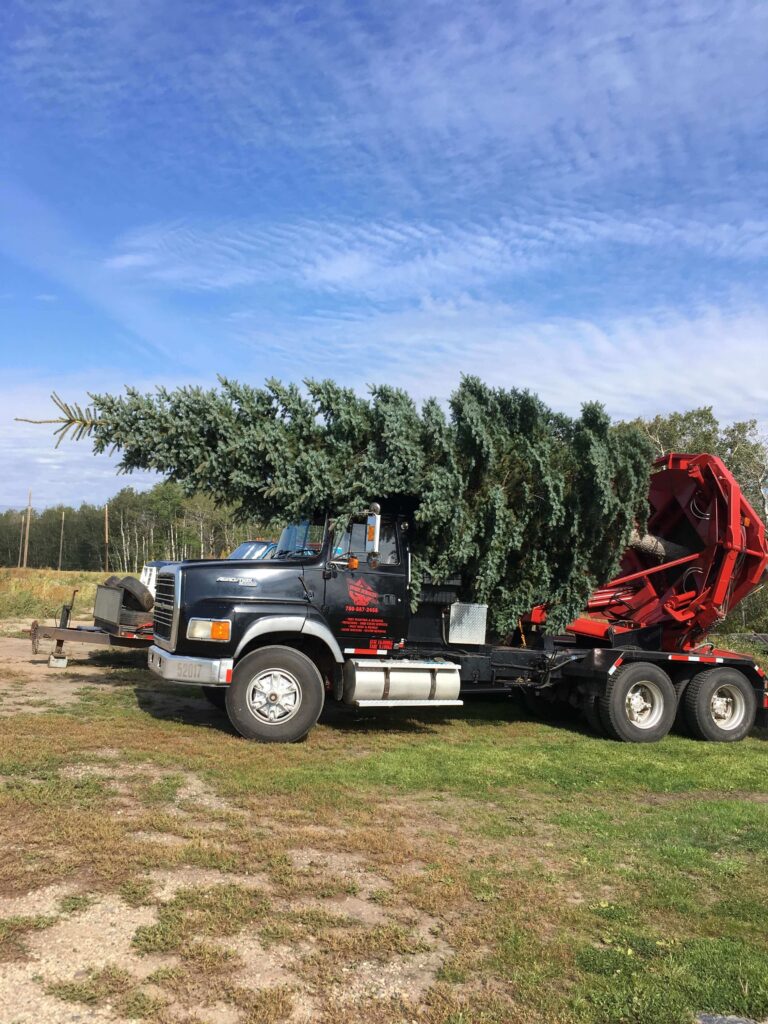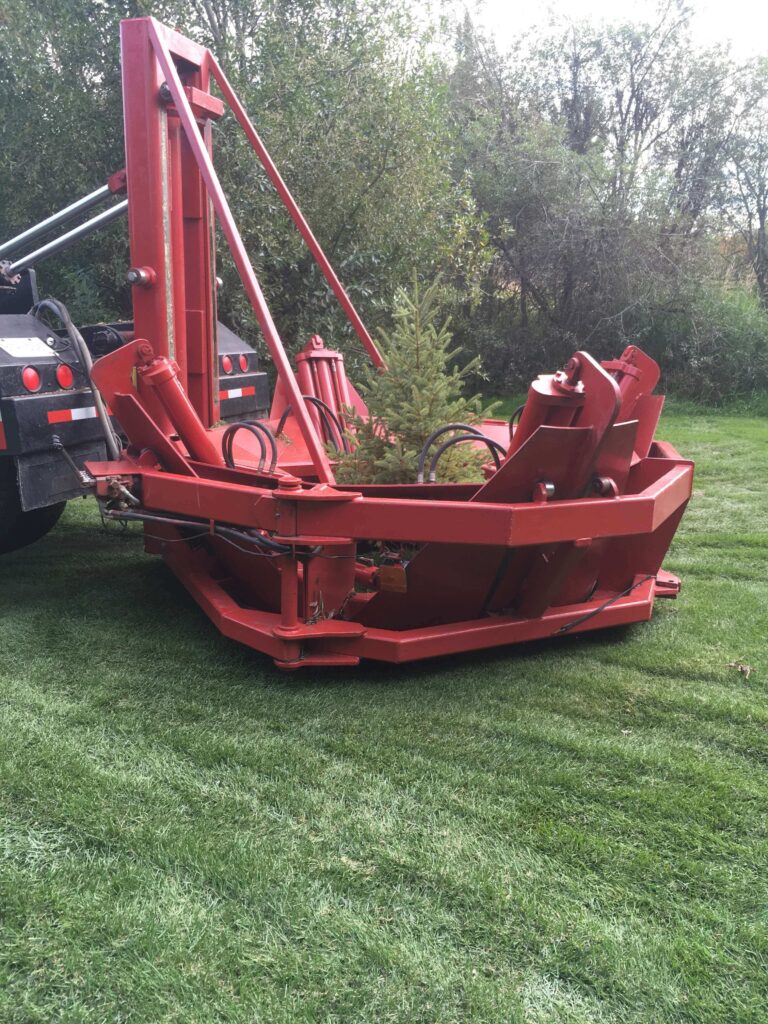Land-owners contact Alberta One Call @ 1-800-242-3447
It is important to contact local utilities before planting to be sure the selected location is not over gas, power, cable or telephone lines.
- Any kind of tree planting and removal
- Trees from 6’ to 40’ can be moved
- Tree planting & removal
- Skid steer services
- Post hole & dirt augers
- Light hauling deck trailers
- Enclosed trailer for transport
- Stump removal
Two or three days prior to moving, give the tree a slow thorough watering if possible. Once the soil plug is removed the preferred preparation is to place a small amount of fertilizer and bone meal in the bottom of the hole. Once the tree is placed, the mixture will be forced into any air spaces around the root ball to ensure better contact with the new soil.
Once the tree spade is planted, fill the cut line with garden mix 1″ deep and spread about 6-12″ wide all around the cut line; rake into the surrounding soil or grass ensuring to seal up air from getting to roots. It is recommended that taller trees in wind-exposed areas be staked for the first year or two depending on tree size and wind exposure.
The sooner the transplanted tree is watered the better and the less the tree will shock after moving.


MAINTAINING TRANSPLANTED TREES
During the first year, transplanted trees should be watered regularly throughout the summer and continue right through the fall until the ground is frozen. The soil should be kept moist but not muddy.
We recommend and can supply you with special formulated 28-14-14 plus fertilizer on newly transplanted trees with a root booster. Different fertilizers are used on deciduous trees and evergreen trees, always read the instructions on fertilizers before applying.
Later in the year, it is normal for transplanted deciduous trees to turn colour and drop leaves a little earlier than normal. As well, it is not unusual for transplanted evergreens to have needles closest to the trunk turn colour and drop off.
Transplanted trees always need to be watered, but be careful – they can become over-watered.